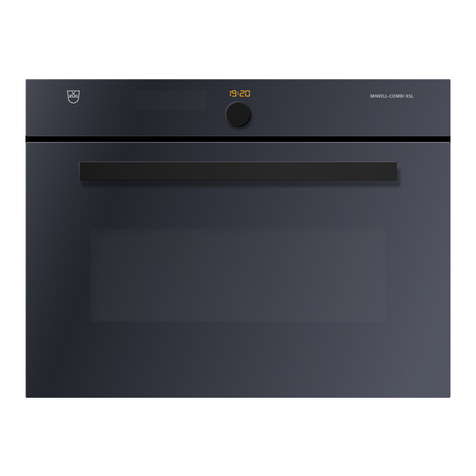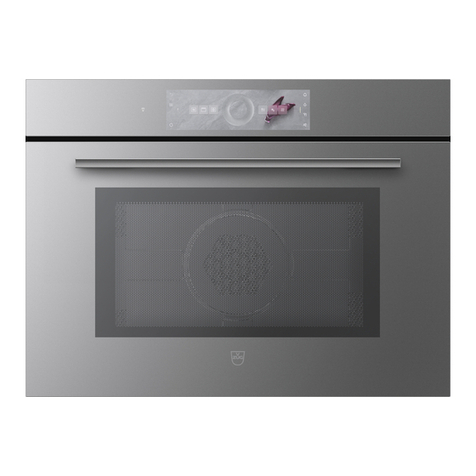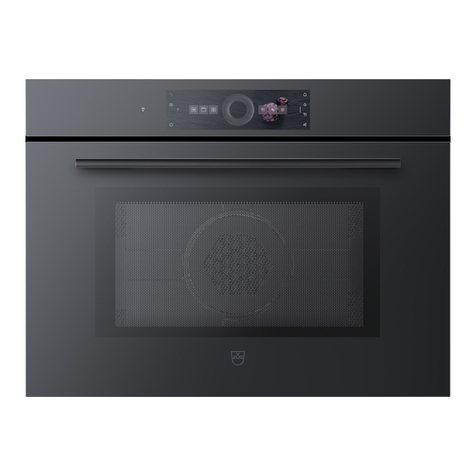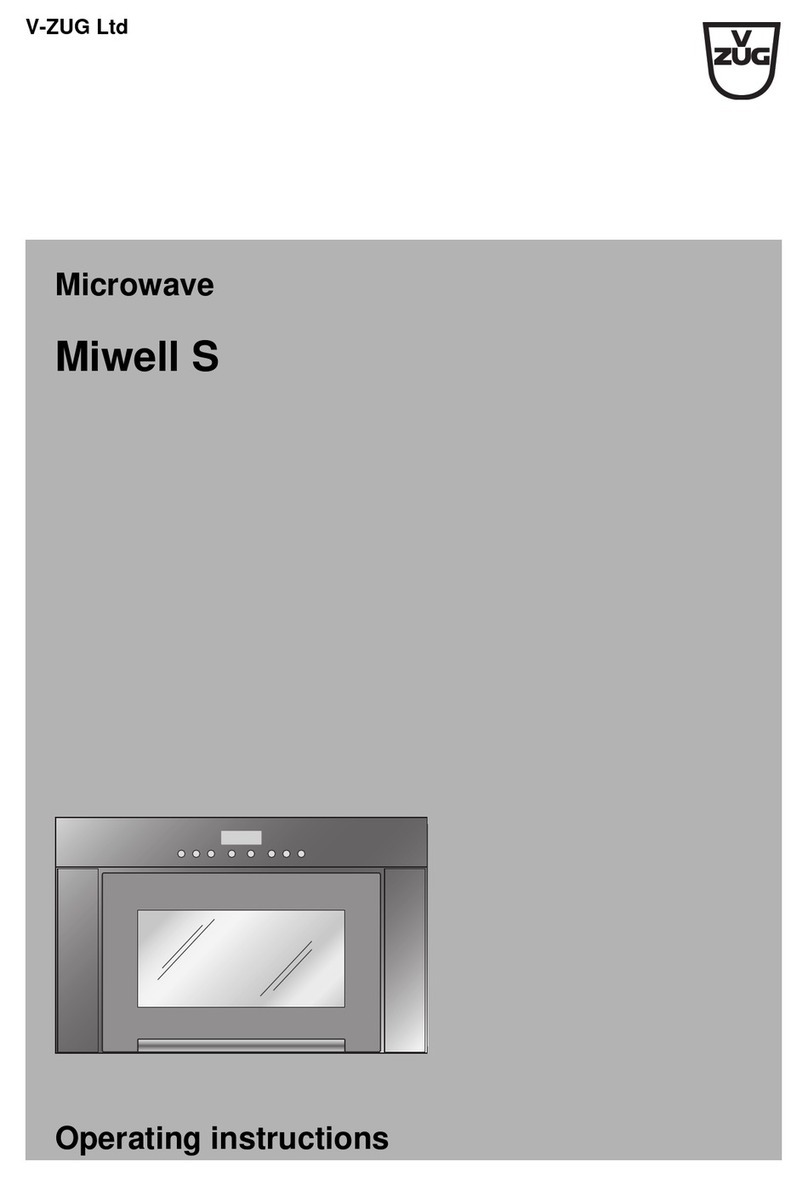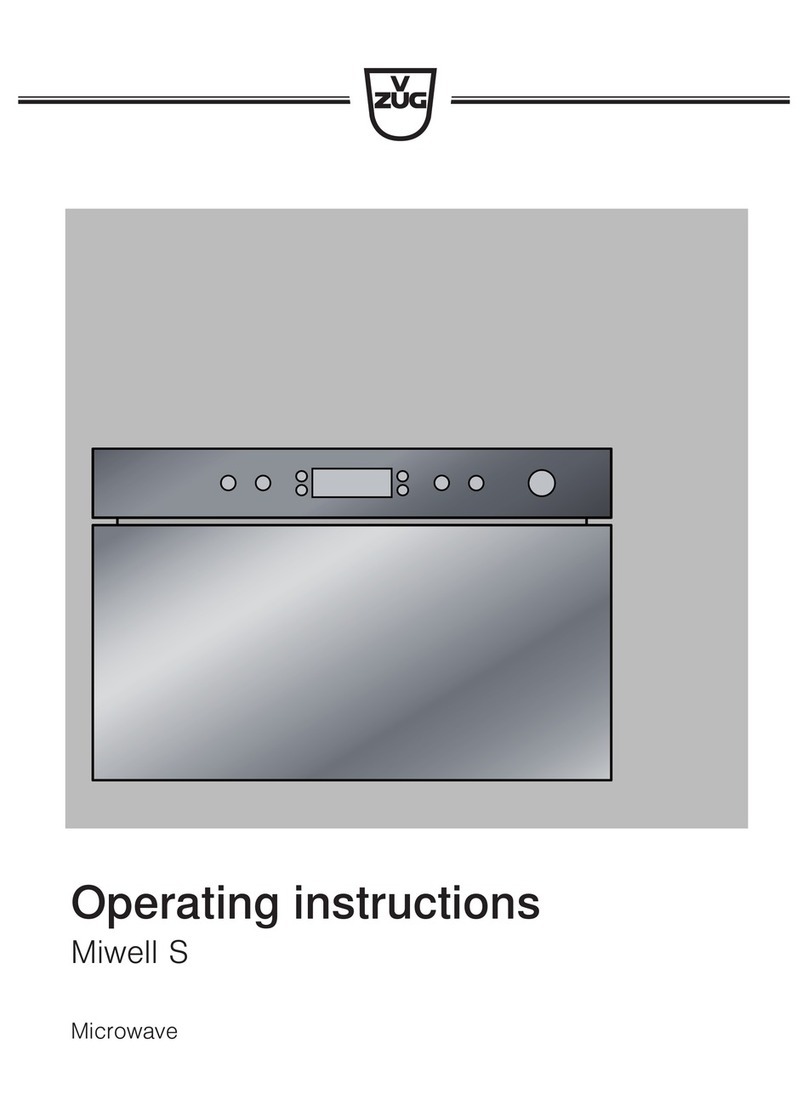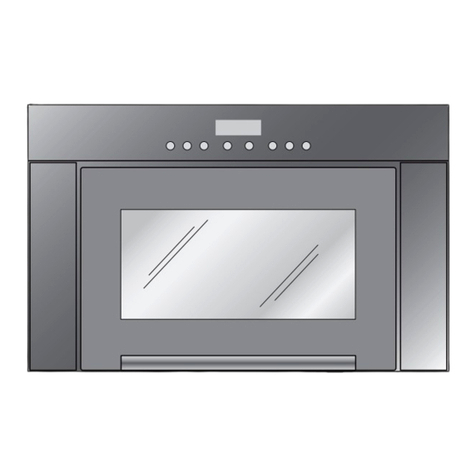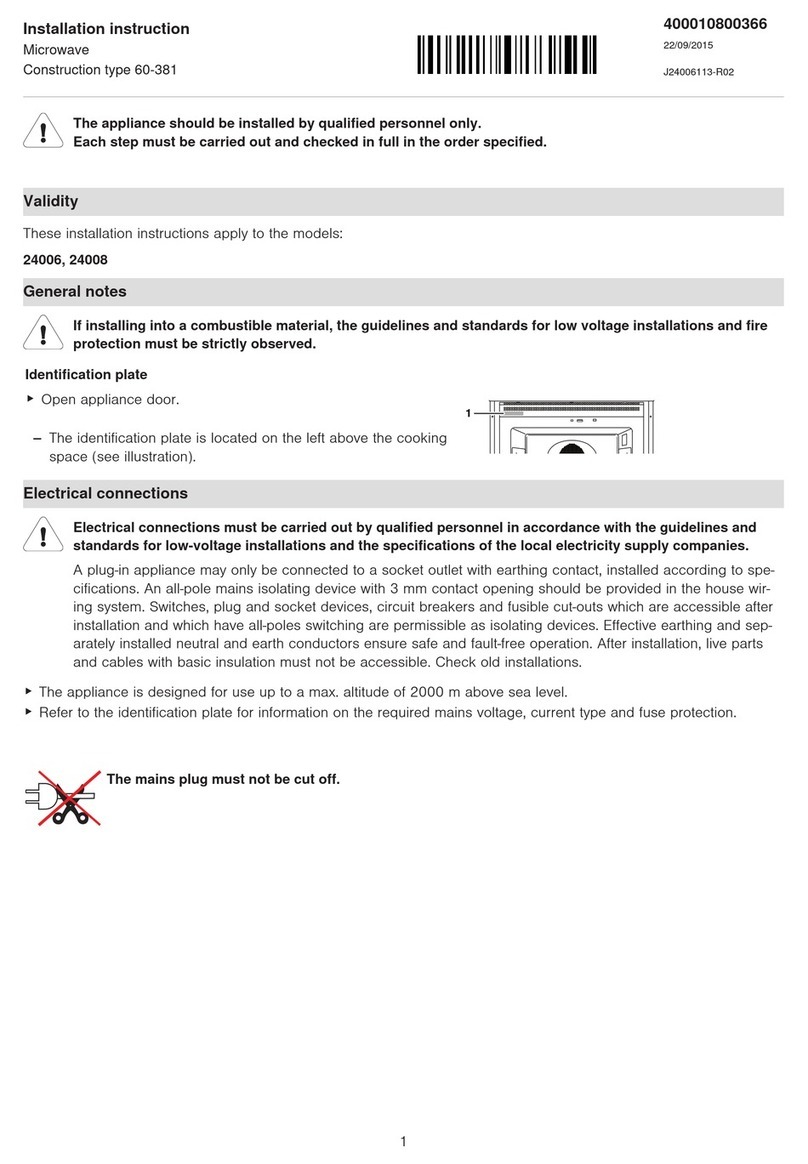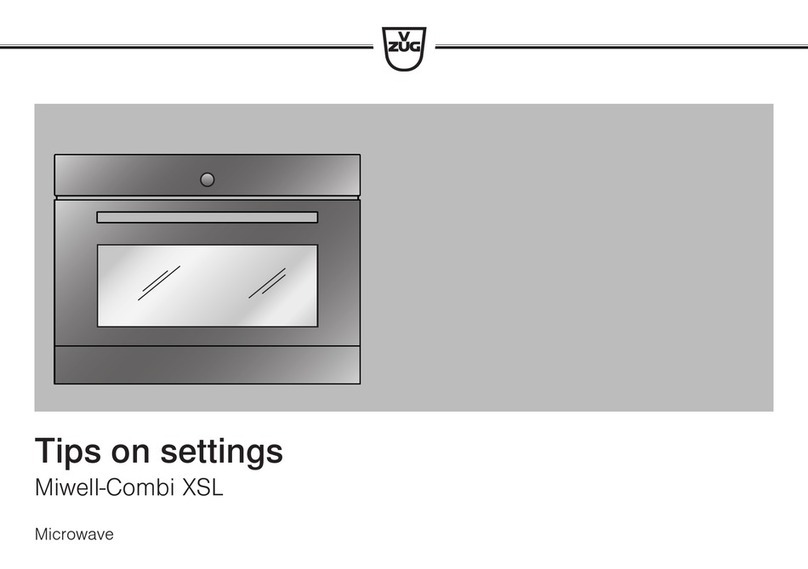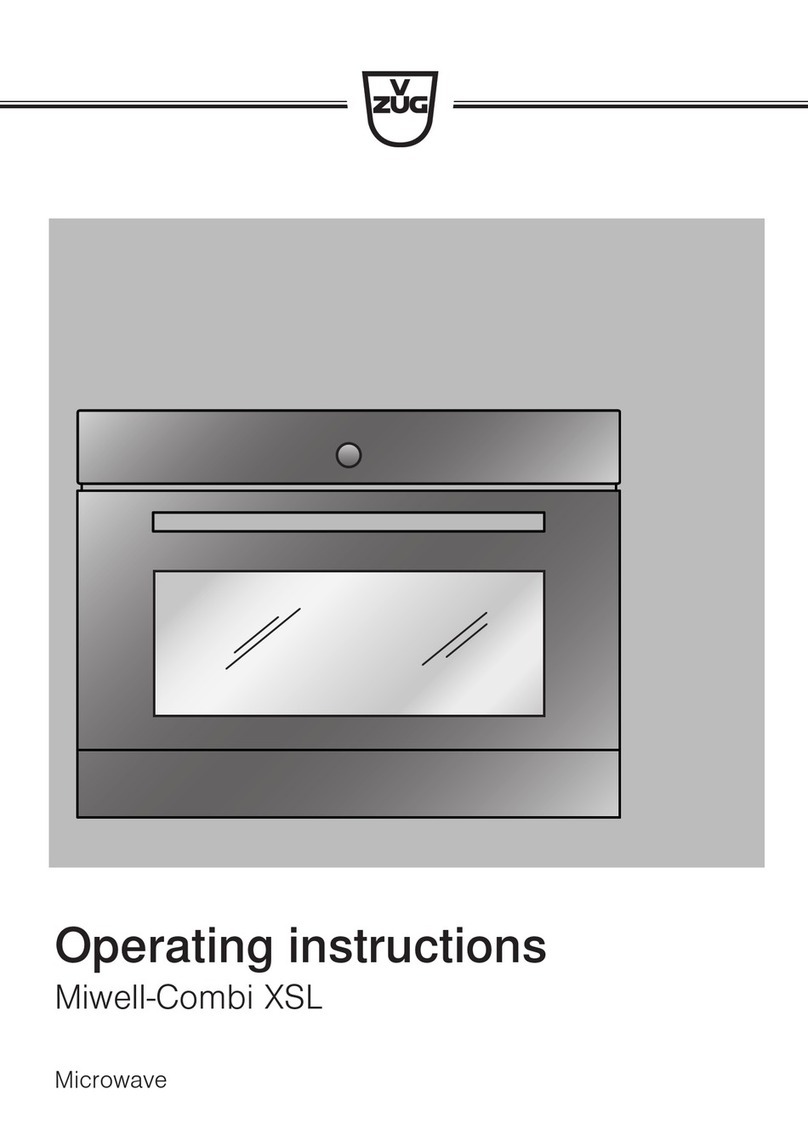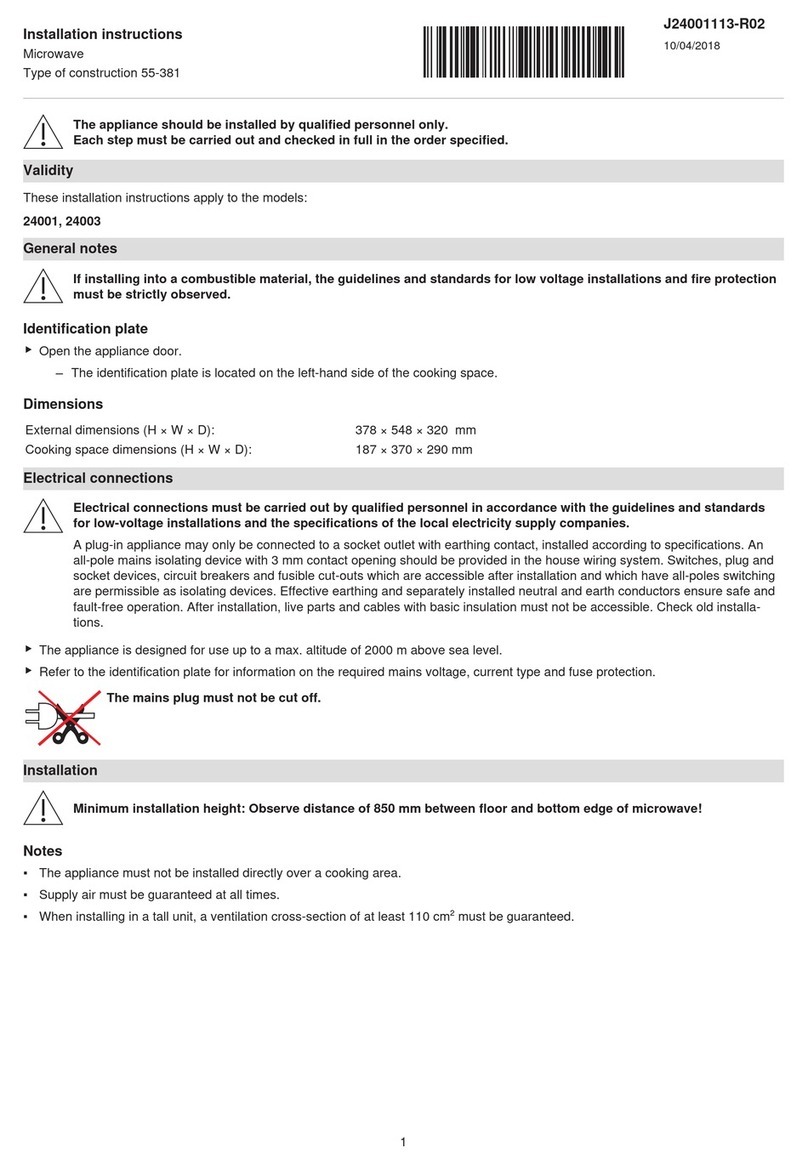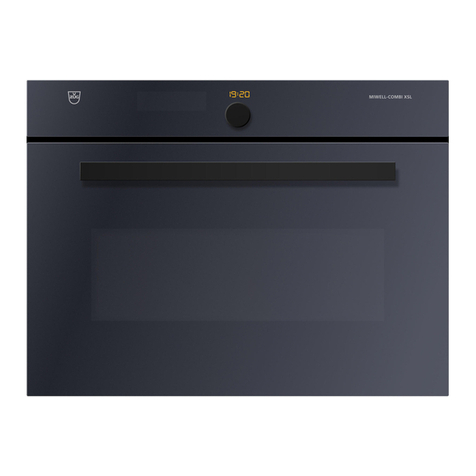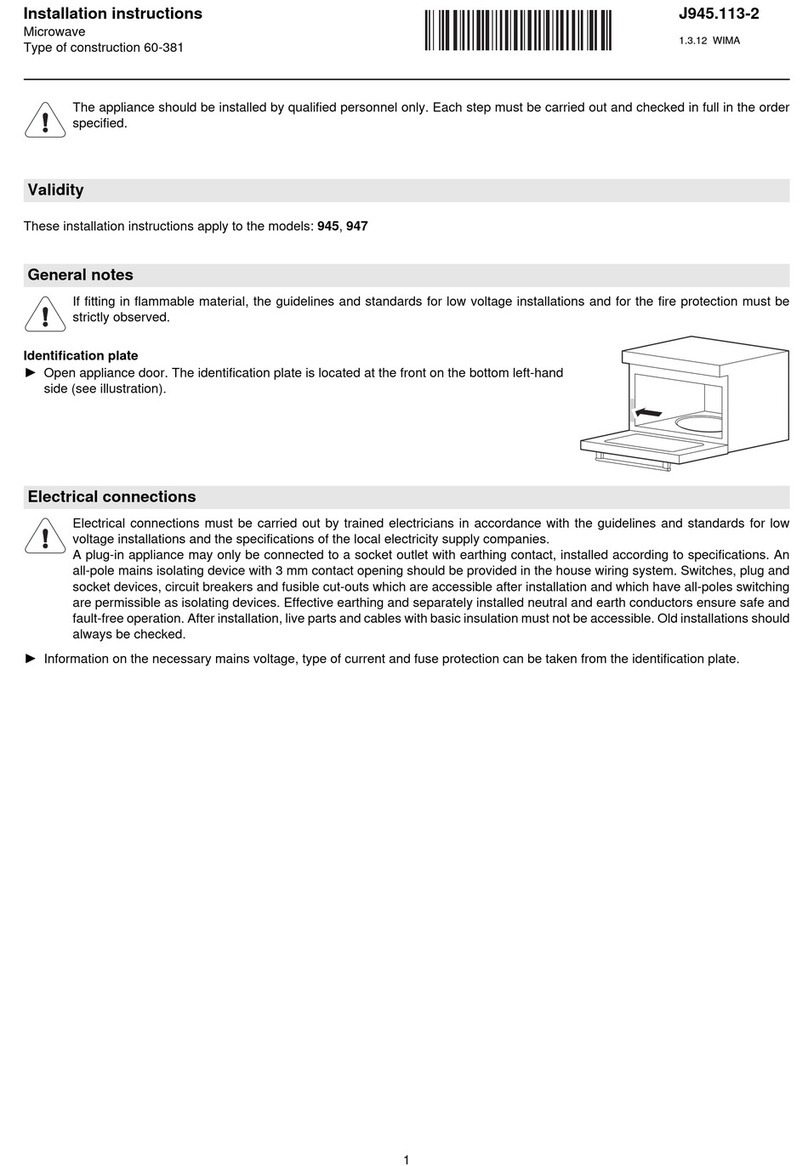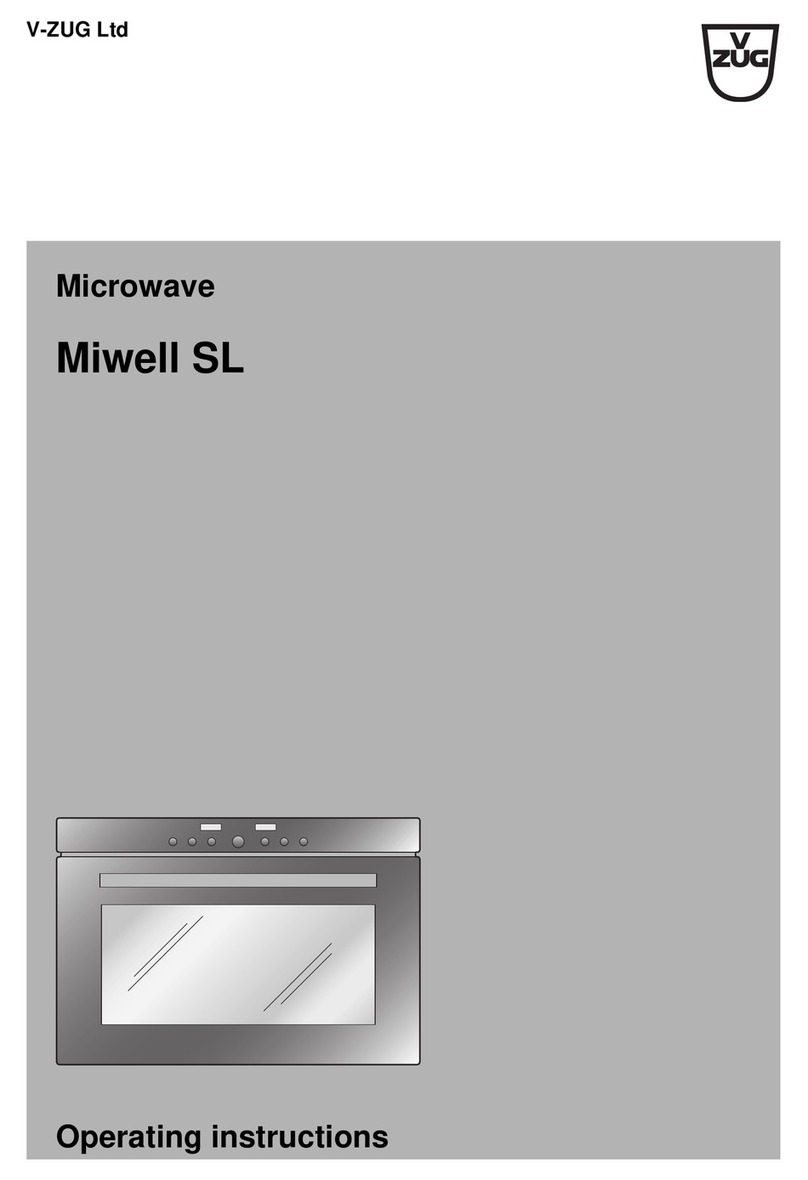
1 Safety precautions
▪Heating beverages in a microwave can result in delayed
eruptive boiling (super boiling). Scalding hazard! Be careful
when you handle the container!
▪The contents of feeding bottles and baby food jars must be
stirred or shaken and the temperature must to be checked
before consumption in order to avoid burns and scalds.
▪Eggs in their shell or whole hard-boiled eggs should not be
heated in microwave appliances since they may explode,
even after microwave heating has ended.
▪Keep the appliance and the door seals clean. Remove any
soiling as soon as possible. Otherwise the appliance or the
door seal could become damaged, adversely affecting the life
of the appliance and possibly resulting in a hazardous situ-
ation. For more information on cleaning the door seals, the
cooking space and the adjoining parts, see the «Care and
maintenance» section.
▪Do not use aggressive or abrasive cleaning agents or sharp
metal scrapers to clean the glass in the appliance door, as
they could scratch the surface. This could destroy the glass.
▪Never use a steam cleaner for cleaning the appliance.
1.4 Disclaimer
▪Any repairs, modifications or manipulations to the appliance, especially any
electrically live parts, may only be carried out by the manufacturer, its Cus-
tomer Services or a similarly qualified person. Repairs if carried out incor-
rectly could cause serious injury or damage to the appliance and fittings as
well as affect the functioning of the appliance. If the appliance is not work-
ing properly or in case of a repair order, follow the instructions given in the
'Repair service' section. If necessary, please contact our Customer Services.
▪Make sure no water gets inside the appliance. Do not spray the appliance
with water. If water gets inside it can damage the appliance.
▪Retain these operating instructions for future reference. If you sell the appli-
ance or pass it on to a third party, please ensure these operating instruc-
tions and the installation instructions accompany the appliance.
▪The appliance is designed for use in the home for preparing food. No liabil-
ity is assumed for any damage caused by improper use or incorrect hand-
ling.
8

